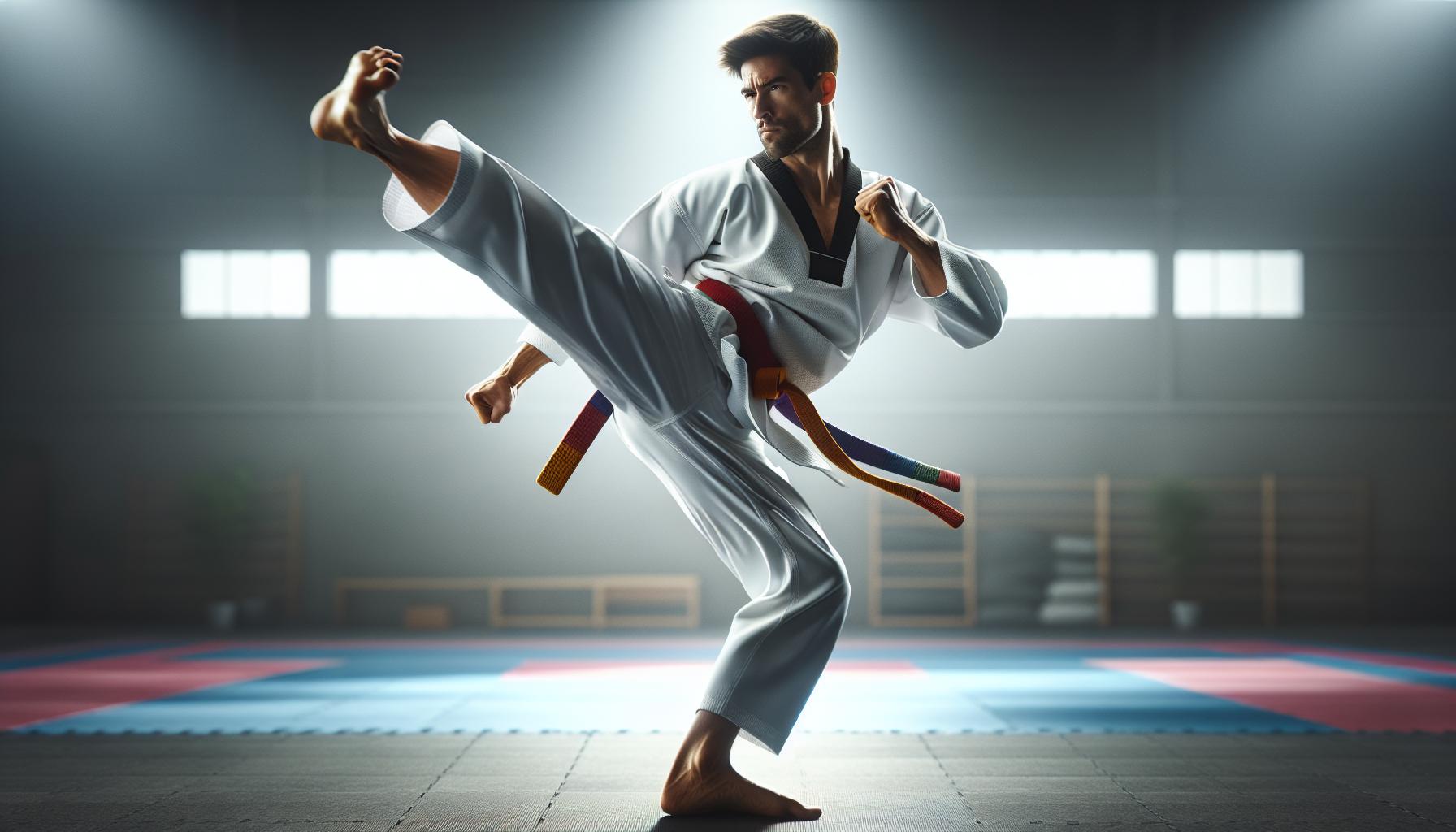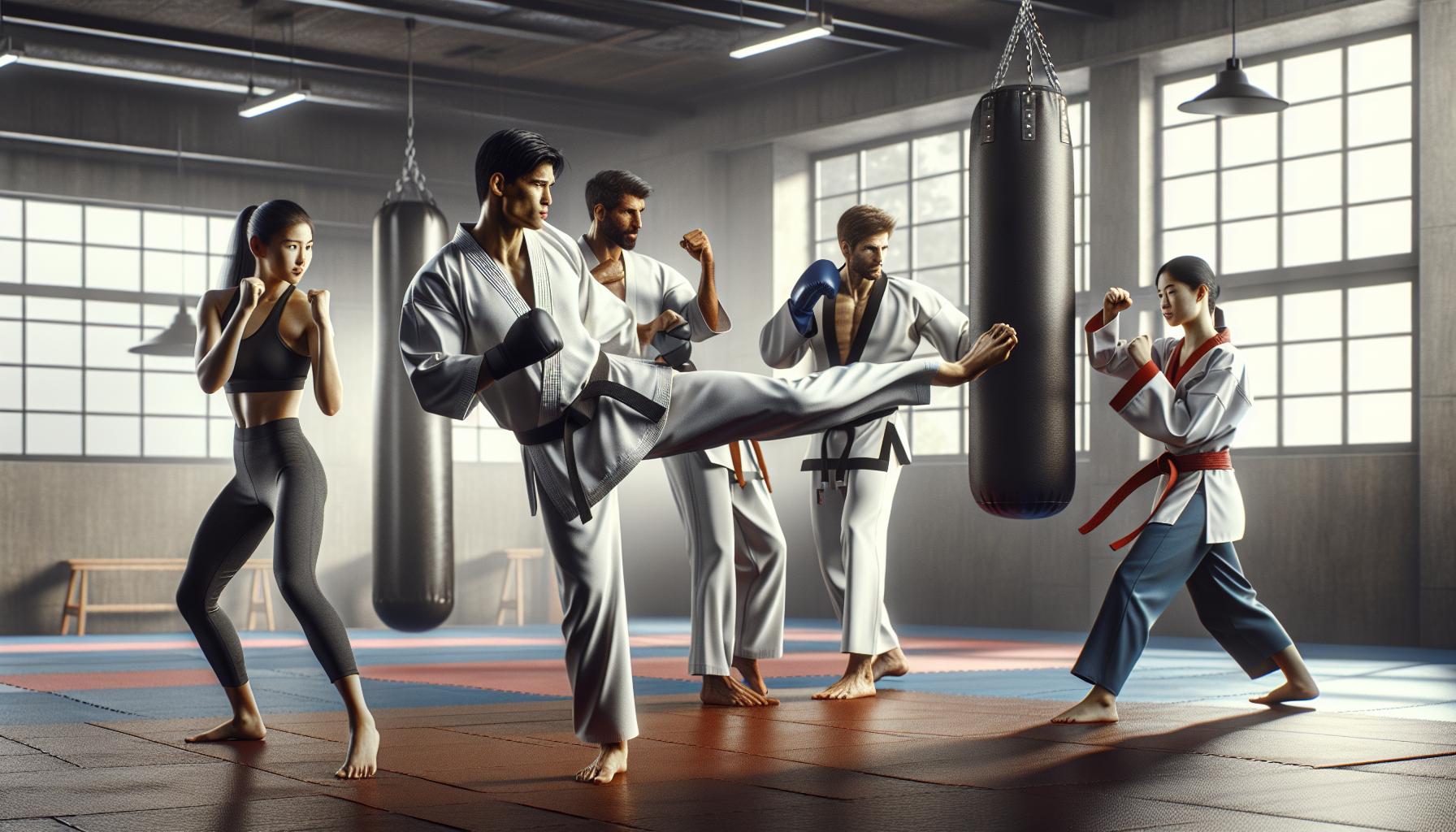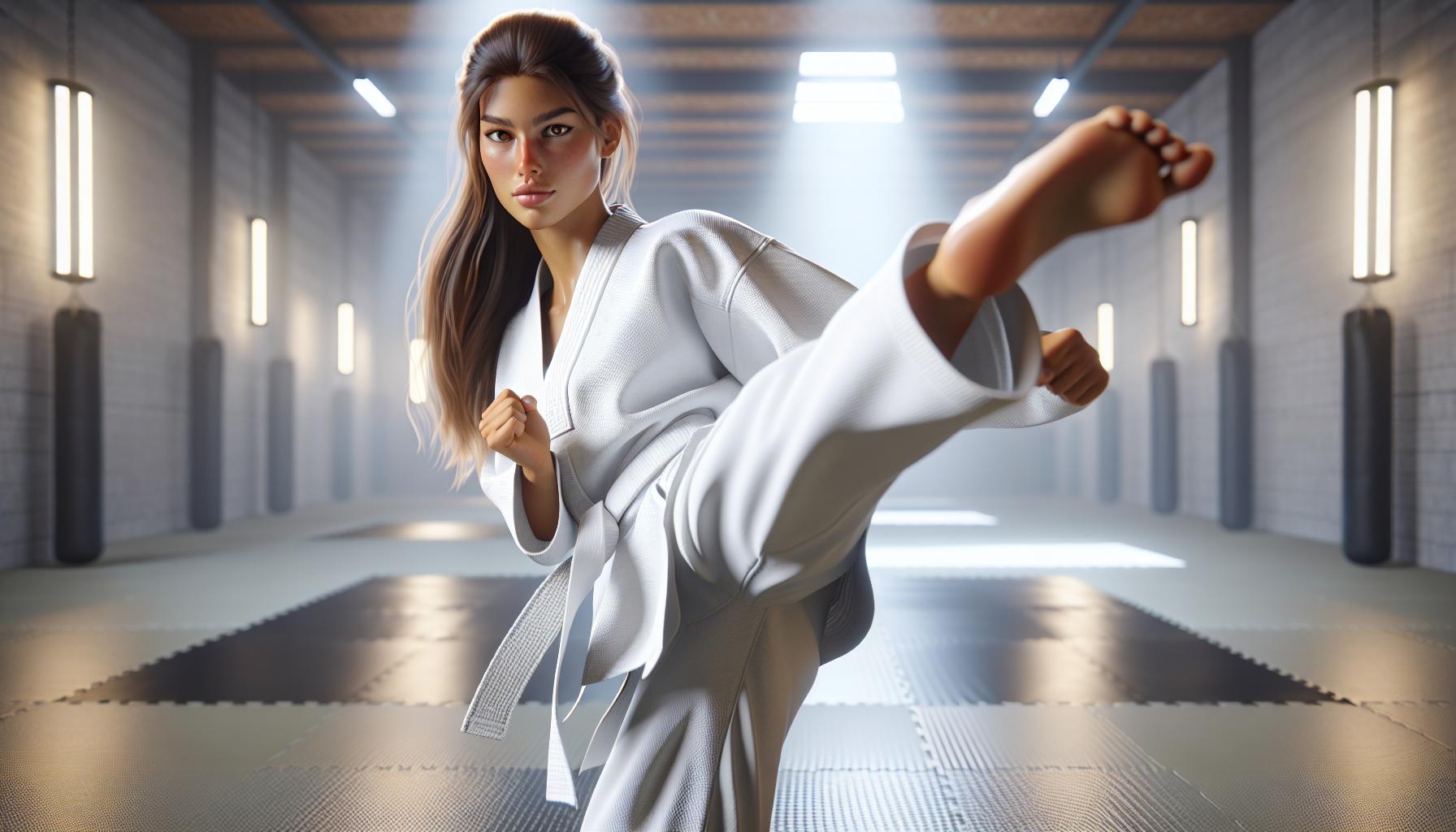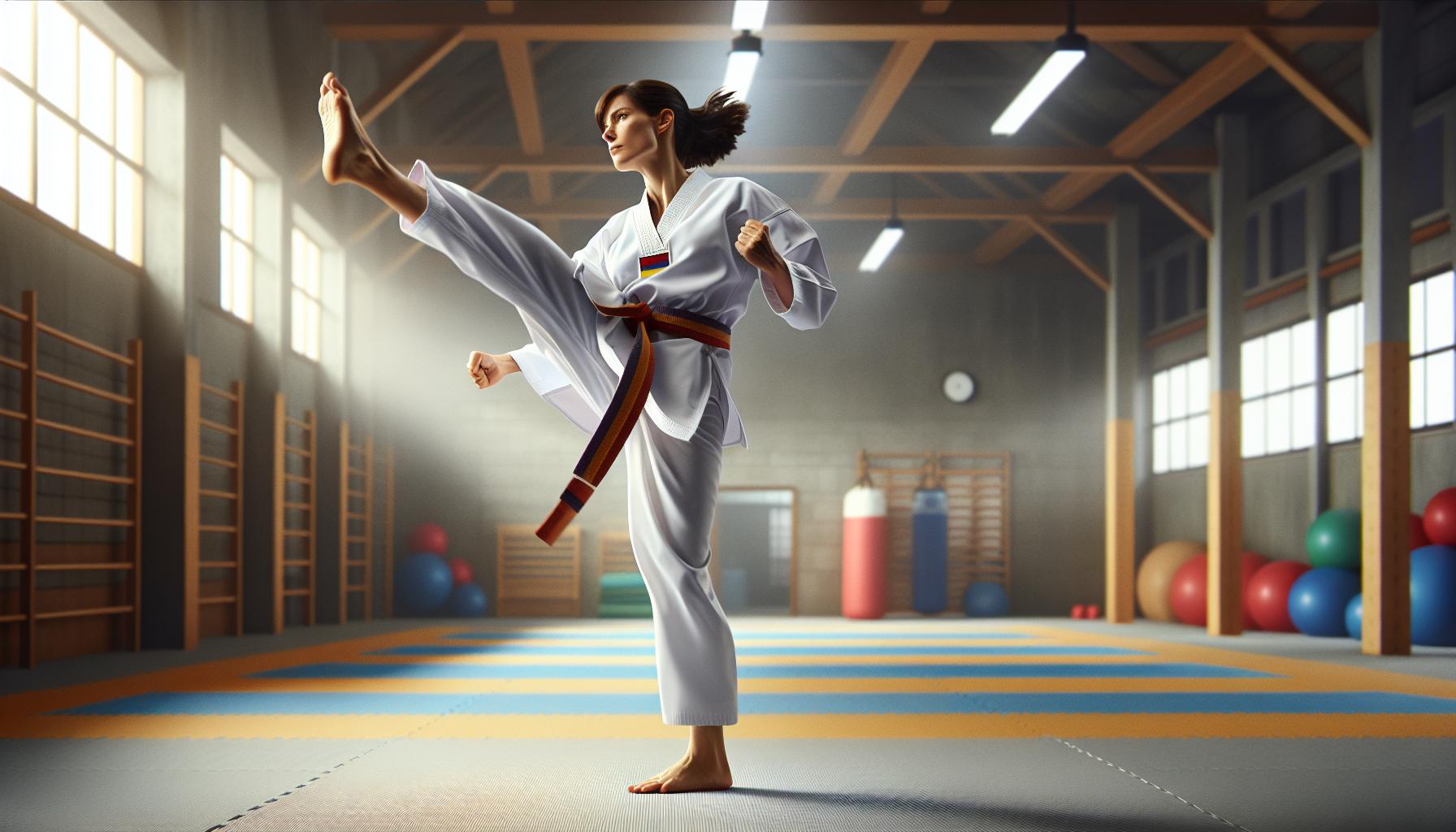When it comes to martial arts, the options can feel overwhelming. With so many disciplines, each with its own unique techniques and philosophies, it’s easy to get lost in the details. Taekwondo stands out as one of the most popular forms, known for its dynamic kicks and emphasis on discipline. But how does it compare to the broader world of martial arts?
In this article, I’ll explore the key differences between martial arts as a whole and taekwondo specifically. Whether you’re a seasoned practitioner or just curious about the distinctions, understanding these nuances can help you appreciate the rich tapestry of martial arts. Let’s dive into what sets taekwondo apart and why it might be the perfect fit for you.
Key Takeaways
- Understanding Martial Arts: Martial arts encompass various combat practices focused on physical, mental discipline, and personal growth, including striking, grappling, and weapon-based techniques.
- Distinct Features of Taekwondo: Taekwondo is known for its unique high, fast kicking techniques and dynamic footwork, setting it apart from other martial arts forms.
- History and Global Recognition: Emerging from Korea in the mid-20th century, taekwondo gained international prominence and was recognized as an Olympic sport in 2000.
- Comparison Insights: While both martial arts and taekwondo prioritize self-defense, discipline, and fitness, taekwondo particularly emphasizes kicking techniques and incorporates specific forms (hyung) into training.
- Benefits of Practice: Engaging in martial arts, especially taekwondo, enhances physical fitness, builds self-defense skills, improves mental focus, and fosters a strong sense of community among practitioners.
Overview of Martial Arts
Martial arts encompass a wide range of combat practices that emphasize physical and mental discipline. These practices serve various purposes, from self-defense to competition, fitness, and personal development.
Definition of Martial Arts
Martial arts refer to traditional and contemporary systems of training focused on techniques for combat. This includes striking, grappling, and weapon-based approaches. Each discipline incorporates principles of respect, discipline, and mental fortitude, promoting not just physical skills but also personal growth.
Types of Martial Arts
Numerous styles define the martial arts landscape. Here are some prominent types:
- Karate: A striking art from Japan emphasizing punches, kicks, and knee strikes.
- Judo: A grappling art from Japan focusing on throws and ground control.
- Kung Fu: A Chinese system involving various techniques, forms, and philosophies.
- Brazilian Jiu-Jitsu: A grappling-based art emphasizing ground fighting and submissions.
- Muay Thai: A striking art from Thailand known for its use of elbows and knees.
- Taekwondo: A Korean martial art recognized for its dynamic kicking techniques and high-energy training.
These diverse styles provide practitioners with an array of techniques and philosophies, allowing them to find the right fit for their individual goals.
Understanding Taekwondo

Taekwondo stands out among martial arts for its distinctive emphasis on high, fast kicks and dynamic footwork. This section delves into its history and key techniques that define this engaging discipline.
History of Taekwondo
Taekwondo originated in Korea, with roots tracing back to ancient martial arts such as taekkyon and hwa rang do. Its formal development began in the mid-20th century, primarily influenced by Japanese karate and traditional Korean fighting styles. In 1955, the term “taekwondo” emerged, unifying various schools under a shared philosophy. By 1973, taekwondo gained international recognition, and the World Taekwondo Federation was established to standardize techniques and promote the sport globally. The Olympics included taekwondo as a full medal event in 2000, enhancing its global presence.
Key Techniques in Taekwondo
Taekwondo features several key techniques that practitioners master as they progress.
- Kicking Techniques: High, fast kicks characterize taekwondo, including front kicks, roundhouse kicks, side kicks, and spinning kicks.
- Blocking Techniques: Blocking techniques protect against strikes and include high blocks, middle blocks, and low blocks, focusing on effective defense.
- Striking Techniques: Punching forms, such as reverse punches and hook punches, complement the extensive kicking repertoire, providing versatility in attacks.
- Forms (Hyung): Practicing forms includes sequences of movements that enhance precision, timing, and rhythm, allowing students to develop discipline and technique.
- Sparring: Controlled sparring allows practitioners to apply techniques in a live setting, focusing on timing, distance, and strategy to outmaneuver opponents.
Understanding these elements provides insight into the unique aspects of taekwondo and its comprehensive approach to martial arts.
Comparison: Martial Arts vs Taekwondo

Exploring the comparison between martial arts and taekwondo reveals both shared elements and distinct characteristics. Understanding these aspects helps potential practitioners make informed decisions about their training paths.
Similarities Between the Two
- Self-Defense: Both martial arts and taekwondo emphasize self-defense techniques. Practitioners learn to protect themselves in various situations.
- Discipline: Both require discipline. Training in either form builds mental focus and perseverance.
- Physical Fitness: Both contribute to improved physical fitness. Practitioners experience benefits such as increased strength, flexibility, and endurance.
- Community: Both foster a sense of community. Class settings encourage camaraderie among practitioners and trainers.
- Competition: Both may include competitive elements. Events like tournaments allow for skill testing against others.
- Technique Focus: Taekwondo prioritizes kicking techniques. Other martial arts often emphasize a broader range of strikes, grappling, and footwork.
- Philosophy: Taekwondo emphasizes the code of ethics and respect, while some martial arts focus heavily on combat efficiency and strategy.
- Forms: Taekwondo includes specific forms (hyung) that combine techniques into sequences. Many other martial arts have different forms or routines that vary in focus.
- Sparring: Taekwondo utilizes controlled sparring to practice techniques. In contrast, other martial arts may employ varied sparring rules and formats.
- Cultural Background: Taekwondo reflects Korean culture and traditions. Other martial arts often draw from distinct cultural heritages, influencing their techniques and philosophies.
Benefits of Practicing Martial Arts

Practicing martial arts offers a spectrum of advantages that enhance both physical and mental well-being. Engaging in these disciplines fosters personal growth, discipline, and fitness.
Physical Benefits
- Improved Strength: Practicing various techniques builds muscle strength, particularly in the legs, core, and arms. Regular training increases overall body power.
- Enhanced Flexibility: Dynamic movements and stretching routines improve flexibility. This is crucial for executing high kicks and intricate techniques, especially in taekwondo.
- Increased Endurance: Cardio-intensive training boosts cardiovascular fitness. Continuous practice elevates stamina, allowing for longer training sessions and better performance in competitions.
- Weight Management: Intense martial arts workouts burn calories, aiding in weight loss or maintenance. Engaging in regular practice can lead to significant improvements in body composition.
- Better Coordination: Techniques requiring precision and timing enhance hand-eye and foot-eye coordination. Increased coordination translates to improved overall motor skills.
- Enhanced Focus: Martial arts training requires concentration, promoting mental clarity. Practitioners learn to focus on tasks, which translates to better performance in daily activities.
- Stress Relief: The physical exertion and mindfulness aspects help reduce stress and anxiety. Practicing martial arts provides an outlet for releasing pent-up energy and frustrations.
- Boosted Confidence: Mastering techniques and achieving personal goals fosters self-confidence. The sense of accomplishment from earning belts or awards empowers practitioners.
- Discipline Development: Structured training routines reinforce self-discipline. Practitioners learn to commit to regular practice and respect their peers and instructors.
- Community Connection: Martial arts schools create supportive environments. Building relationships with fellow practitioners fosters a sense of belonging and camaraderie.
Benefits of Practicing Taekwondo
Taekwondo offers numerous benefits that extend beyond physical fitness. Practicing this martial art enhances both mental and emotional well-being.
Discipline and Focus
Practicing taekwondo cultivates discipline and focus. Each session requires concentration on techniques and forms, facilitating mental clarity. This heightened focus translates into everyday life, helping individuals manage tasks and overcome challenges efficiently. Regular training instills commitment, as practitioners learn to set goals, work diligently toward achieving them, and maintain perseverance.
Self-Defense Skills
Taekwondo equips practitioners with essential self-defense skills. The emphasis on kicking techniques and defensive strategies provides effective methods for protecting oneself in various situations. Learning these techniques boosts confidence, empowering individuals to react calmly and decisively if needed. With practice, martial artists become adept at recognizing threats and employing their skills to neutralize potential dangers.
Conclusion
Choosing between martial arts and taekwondo ultimately comes down to personal preference and goals. Taekwondo stands out with its unique emphasis on high kicks and discipline while offering a comprehensive approach to physical and mental development.
Whether you’re drawn to the cultural aspects or the self-defense skills, taekwondo provides a fulfilling experience that can enhance your life in many ways. Exploring the various martial arts styles can help you find the right fit for your journey.
I encourage you to consider what resonates most with you and embark on this rewarding path.

